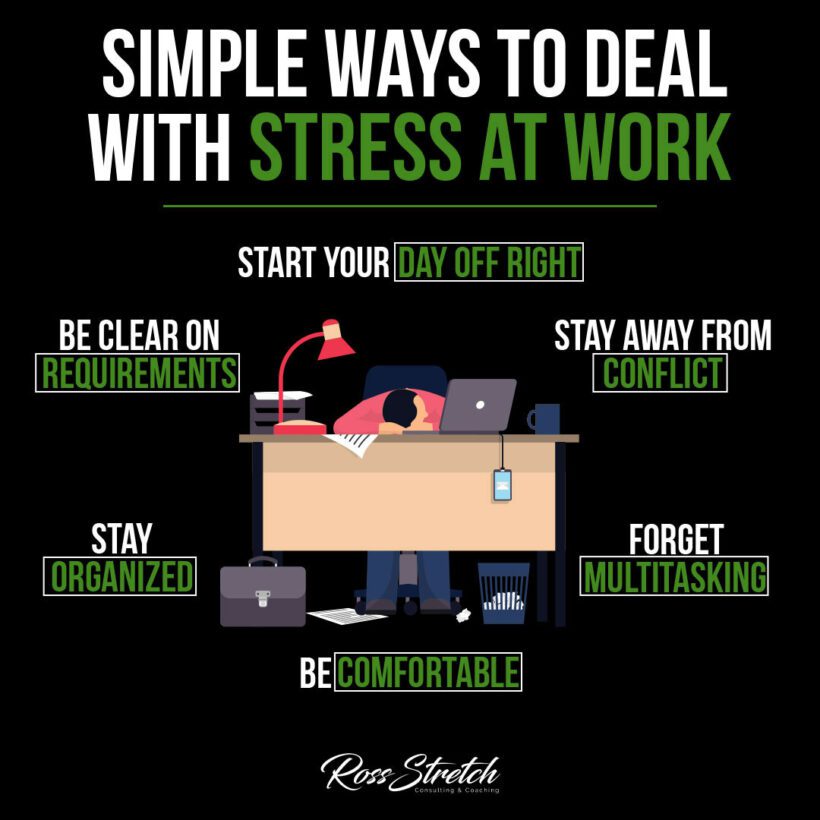Stress at work is an all-too-familiar experience for many professionals. However, there are several simple yet effective ways to manage workplace stress, ensuring it doesn’t overwhelm you and affect your productivity or well-being. Let’s explore practical strategies for creating a more serene work environment.
Start Your Day Off Right
Beginning your day with a positive routine can set the tone for a less stressful workday.
Establishing a Morning Ritual
Consider exercises like meditation or a short walk, which can reduce anxiety and prepare your mind for the day ahead.
Clarity on Requirements
Unclear expectations can be a significant source of stress at work. Ensuring you and your team are clear on what’s required can alleviate unnecessary pressure.
The Power of Clear Communication
Regular check-ins with supervisors and clear documentation can help keep everyone on the same page and reduce stress related to performance and expectations.
Stay Organized
A cluttered workspace can lead to a cluttered mind. Staying organized is essential for maintaining focus and reducing the feeling of being overwhelmed.
Tips for Workplace Organization
Use tools like planners and digital apps to keep track of tasks and deadlines. A tidy physical workspace can also significantly reduce stress.
Avoiding Conflict
Interpersonal conflict is a common stressor at work. It’s crucial to find ways to navigate disagreements professionally.
Conflict Resolution Skills
Developing skills in diplomacy and conflict resolution can help maintain a peaceful and cooperative work environment.
Comfort in the Workspace
Physical discomfort can increase stress levels. It’s essential to create a workspace that is both functional and comfortable.
Ergonomics and Personalization
Invest in a good chair, position your computer monitor at eye level, and add personal touches like plants or photos to make your space more inviting.
Single-Tasking Over Multitasking
While multitasking might seem efficient, it can lead to lower quality work and increased stress.
The Benefits of Focusing on One Task
By concentrating on a single task at a time, you can improve the quality of your work and reduce the sense of being stretched too thin.
Conclusion: A Proactive Approach to Stress Reduction
By implementing these strategies, you can create a work environment that supports productivity and well-being. Remember, taking proactive steps to manage stress is key to maintaining both professional success and personal health.
For further guidance on managing stress at work, consider these resources:
- “The 7 Habits of Highly Effective People” by Stephen Covey: Offers insights on personal management and effective work habits.
- MindTools: Provides a variety of resources and tools for stress management and organizational skills.
- Ergonomics Plus: Offers tips and strategies for setting up an ergonomic workspace to reduce physical stress.
By incorporating advice from these resources and applying the strategies outlined above, you can effectively manage stress at work and create a more productive and enjoyable work environment.


